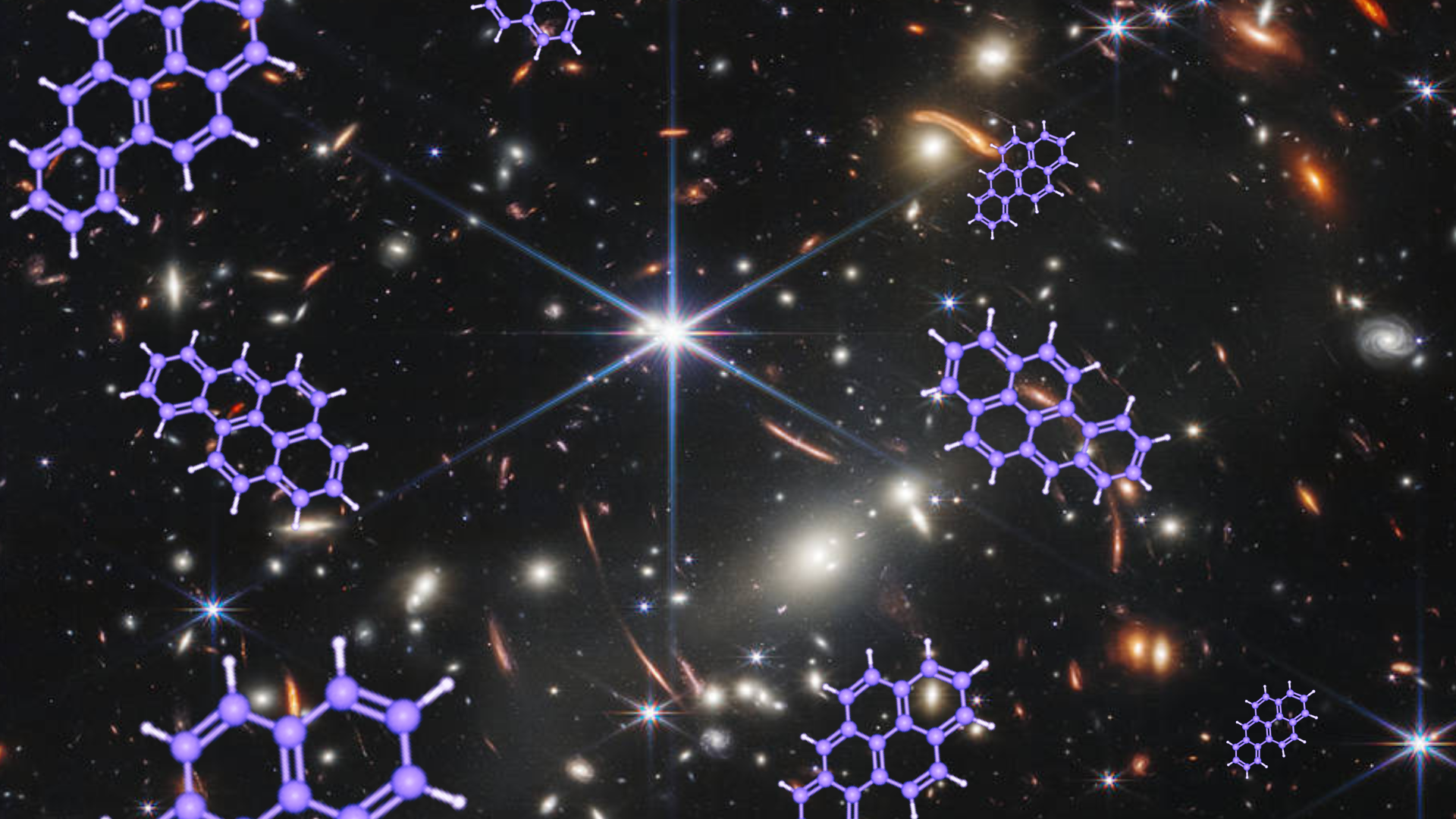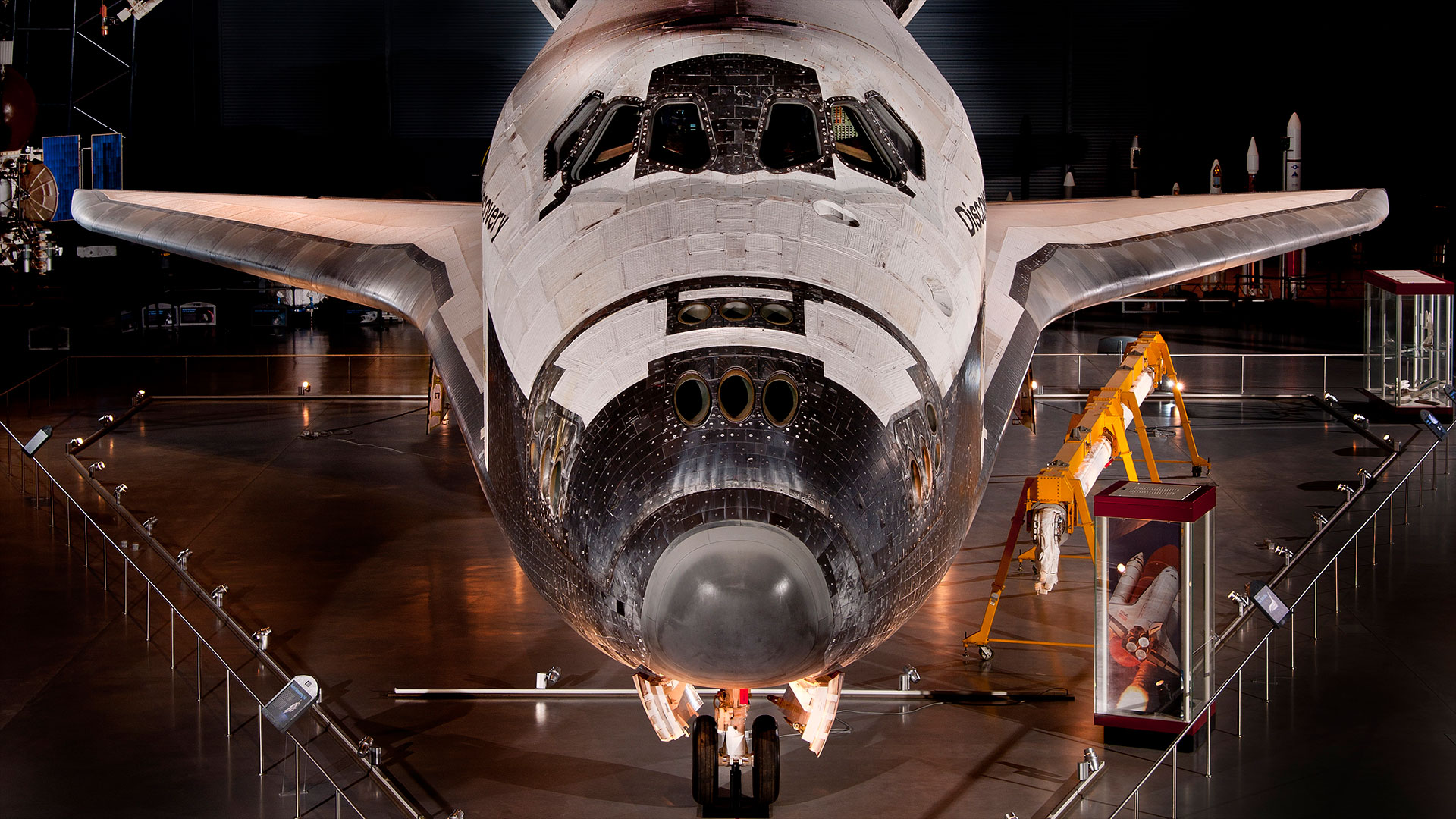James Webb Space Telescope makes 1st detection of diamond-like carbon dust in the universe's earliest stars
The discovery suggests the earliest galaxies formed more quickly after the Big Bang than previously thought.

The James Webb Space Telescope has detected the earliest-known carbon dust in a galaxy ever.
Using the powerful space telescope, a team of astronomers spotted signs of the element that forms the backbone of all life in ten different galaxies that existed as early as 1 billion years after the Big Bang.
The detection of carbon dust so soon after the Big Bang could shake up theories surrounding the chemical evolution of the universe. This is because the processes that create and disperse heavier elements like this should take longer to build up in galaxies than the age of these young galaxies at the time the James Webb Space Telescope (JWST) sees them.
"The surprising finding here is that we can directly see and learn about the properties of these dust grains at such an early time, and we can tell they're carbon-based," research lead author and University of Cambridge scientist Joris Witstok told Space.com. "That's quite surprising in the context of what we previously expected."
Related: See amazing images from James Webb Space Telescope's 1st year gazing deep into the cosmos (photos)
The team spotted this carbon dust in this sample of ten galaxies by examining the light spectrum from them as part of the JWST Advanced Deep Extragalactic Survey (JADES). Detections like this are possible because elements absorb and emit light at characteristic wavelengths meaning they leave their "fingerprints" in light from sources such as galaxies and stars.
The aromatic hydrocarbon dust was given away by a 'bump' in the absorption of specific ultraviolet frequencies of light.
Breaking space news, the latest updates on rocket launches, skywatching events and more!
The question is, how did these young galaxies get enriched with carbon so quickly?
A cosmic "get rich quick" scheme?
The early universe was made up of mostly hydrogen and helium with tiny traces of some heavier elements, meaning the first stars and galaxies should have the same composition of just these light elements.
Conventional models of the universe's chemical evolution suggest that heavy elements like carbon and oxygen are forged in the nuclear furnaces at the heart of stars. When the first stars ran out of the fuel for nuclear fusion and reached the end of their lives, they exploded in supernovas dispersing the material they had forged through the cosmos. This stellar matter is integrated into interstellar dust.
When dense patches of this dust collapse, this material becomes the building blocks of the next generation of stars, which are thus richer in heavy elements and sit in similarly enriched galaxies.
This is challenged by the findings reached by Witstok and colleagues as some of the galaxies they saw PAH dust in are estimated to be somewhere in the region of 10 million years old. That implies there must be a creation and dispersal method for carbon that works on a relatively short time scale.
The findings exemplify the kind of science that wouldn't have been possible before the JWST, which began observing the universe and delivering data and images in July 2022.
The wavelengths of light emitted by early galaxies are stretched by the universe's expansion as it travels across billions of light years, thus taking billions of years to reach us. This results in ultraviolet light from galaxies being shifted down the electromagnetic spectrum, a process called "redshift." The more distant, and thus earlier, the galaxy, the more extreme the redshift is, meaning light from the very first galaxies is stretched out to infrared wavelengths. Light from these galaxies has been crossing the cosmos for as long as 12.8 billion years and is now infrared light.
The JWST is the most sensitive infrared space telescope ever placed into space and the only one capable of resolving features like these carbon fingerprints in the light from such distant galaxies.
Regarding the future of this research, Witstok explained that there are two possible avenues to explore.
"First of all, on the observational side, the JWST is collecting more data, so we can look at larger samples of galaxies, and see if we can learn anything linking this carbon fingerprint with specific properties of the galaxies," he said.
On the theoretical side, Witstok said scientists may now start to think about what astrophysical objects and events could produce PAH carbon grains on a short time scale. "There is still a lot of work to be done," he concluded.
The team's research was published on July 19 in the journal Nature.

Robert Lea is a science journalist in the U.K. whose articles have been published in Physics World, New Scientist, Astronomy Magazine, All About Space, Newsweek and ZME Science. He also writes about science communication for Elsevier and the European Journal of Physics. Rob holds a bachelor of science degree in physics and astronomy from the U.K.’s Open University. Follow him on Twitter @sciencef1rst.
